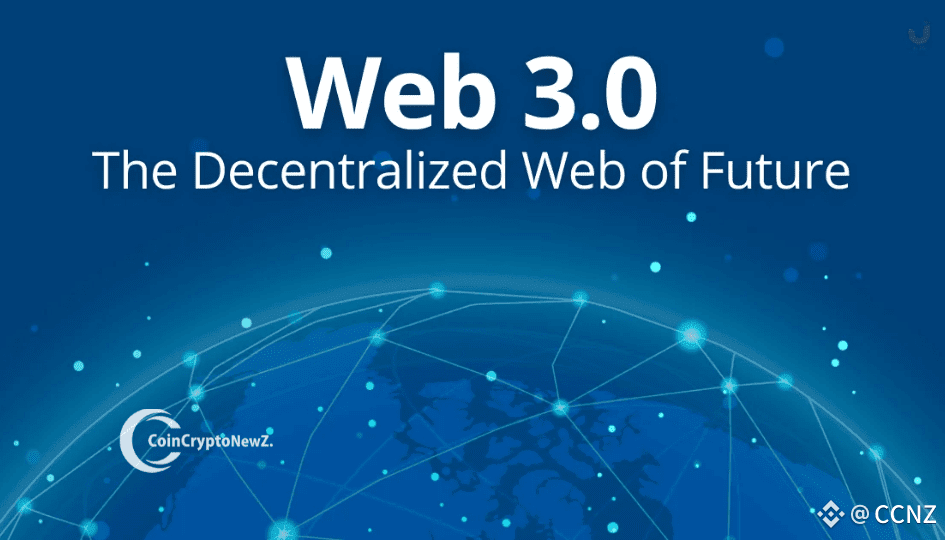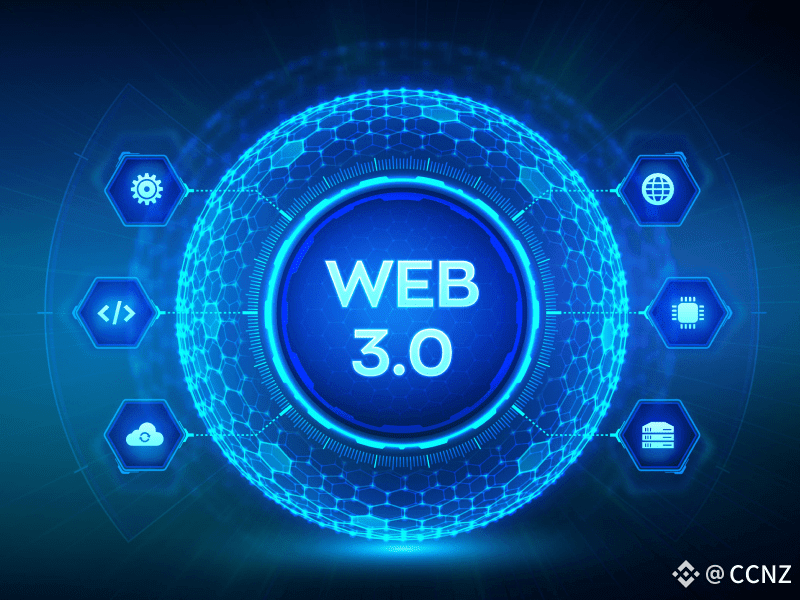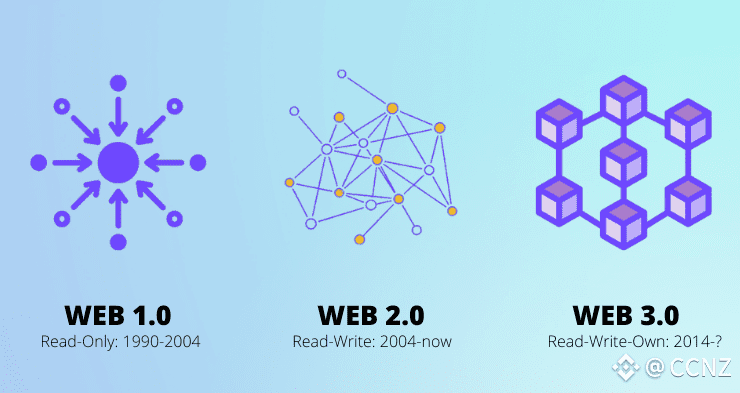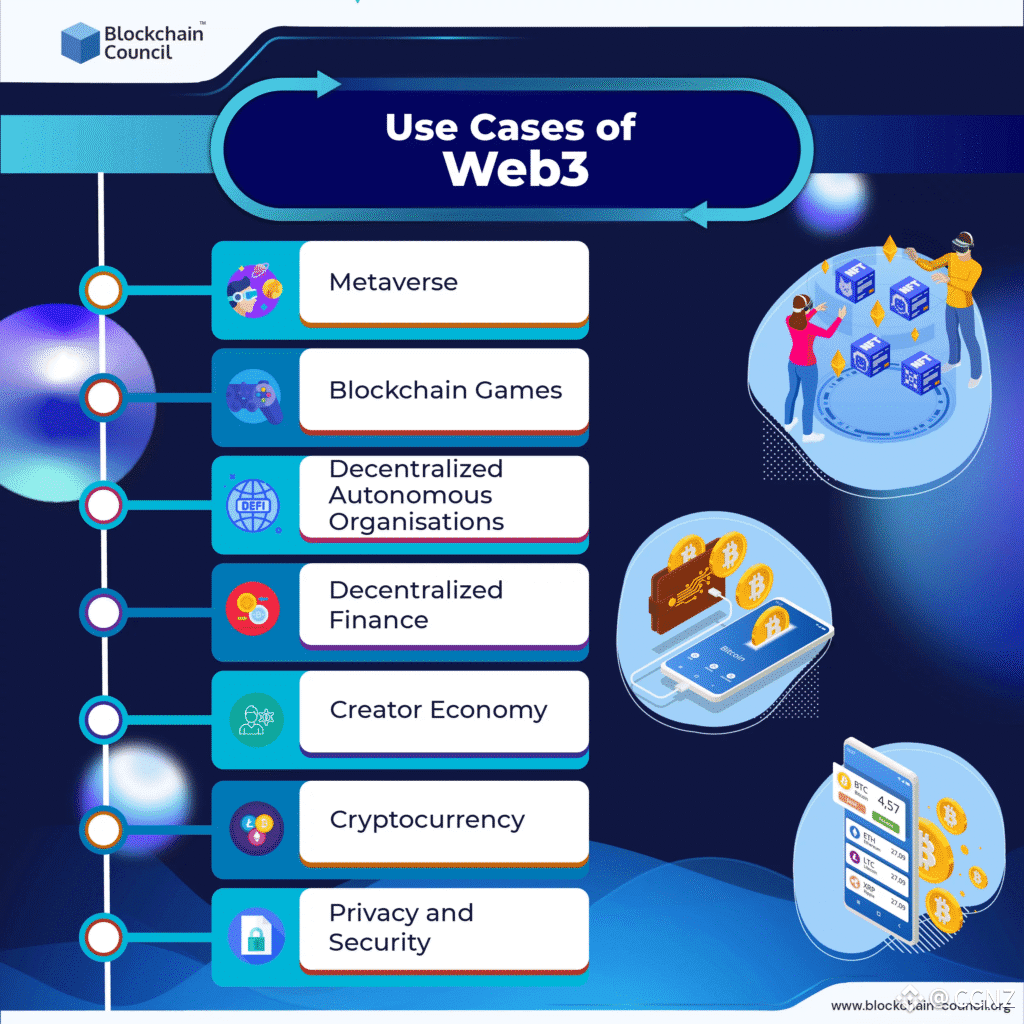 Introduction: Welcome to the Future of the Web
Introduction: Welcome to the Future of the Web
The internet has evolved dramatically over the past three decades. From static web pages in the 90s (Web1) to interactive social platforms (Web2), we now stand on the brink of a new era: Web3.
But what exactly is Web3? Is it just a tech buzzword, or does it truly hold the key to the internet’s next big leap? In this guide, we break down Web3 for beginners, demystify the technology behind it, and explore why it’s making waves across the digital world.
What is Web3?
Web3 refers to the third generation of the internet, where decentralized technologies give users greater control over their data, identity, and interactions online. Unlike Web2, where data is stored and controlled by centralized entities like Google or Facebook, Web3 is powered by blockchain, smart contracts, and tokenized ecosystems.

Core Principles of Web3:
Decentralization: No single authority controls the network
Permissionless: Anyone can participate without approval
Trustless: Interactions happen without intermediaries
Ownership: Users truly own their digital assets (e.g., NFTs, wallets)
These principles are shaping the foundation of a more equitable digital environment.
Web1 vs Web2 vs Web3: The Evolution
 Evolution of the internet from Web1 to Web3
Evolution of the internet from Web1 to Web3
Understanding Web1, Web2, and Web3: The Evolution of the Internet
Web1 (1990s-2004)Web2 (2004-Present)Web3 (Emerging)Static websitesSocial mediaDecentralized apps (dApps)Read-onlyRead and writeRead, write, ownCentralizedCentralizedDecentralizedLimited user interactionHighly interactivePeer-to-peer interactions
The transition from Web1 to Web3 represents a shift from information consumption to participation and ownership.
Key Technologies Behind Web3
Blockchain: The foundation of Web3, storing data in secure, immutable blocks.
Smart Contracts: Self-executing agreements coded into blockchain platforms like Ethereum.
Cryptocurrencies & Tokens: Fuel economic activity in Web3 ecosystems (e.g., ETH, SOL, AVAX).
Decentralized Storage: Systems like IPFS and Arweave replace traditional cloud storage.
DAOs: Decentralized Autonomous Organizations govern platforms through community voting.
These technologies collectively form a decentralized digital infrastructure.
Real-World Applications of Web3
DeFi (Decentralized Finance): Enables borderless, permissionless banking without intermediaries.
Stat: DeFi platforms had over $47 billion TVL (Total Value Locked) as of Q2 2025 (DefiLlama).
NFTs & Digital Ownership: Digital art, music, and even virtual land can be owned and traded on-chain.
Stat: NFT market size is projected to reach $80 billion by 2028 (Statista).
Metaverse: Virtual spaces powered by blockchain where users can interact, play, and earn.
Example: Projects like Decentraland and The Sandbox offer land ownership and in-game economies.
Decentralized Identity: Tools like ENS, Lens Protocol, and Soulbound tokens enable self-sovereign identity.
Gaming & Play-to-Earn: Blockchain-based games allow users to earn tokens and NFTs by playing.
Stat: The GameFi sector was valued at over $13 billion in 2024 and continues to grow rapidly (DappRadar).
Use Cases of Web3:
 Source: Blockchain Council
Source: Blockchain Council
Why Web3 Matters
Data Privacy: Users control who accesses their data.
Financial Inclusion: Anyone with an internet connection can access DeFi services.
Digital Sovereignty: No censorship or centralized control.
New Economic Models: Play-to-earn, create-to-earn, and own-to-earn economies are redefining work.
Transparency & Trust: Open-source code and public ledgers ensure accountability.
Challenges & Criticisms of Web3
Scalability: Networks like Ethereum face high gas fees and limited throughput.
User Experience: Interfaces and tools can be difficult for non-technical users.
Security: Hacks and exploits are common in poorly audited smart contracts.
Regulatory Uncertainty: Governments are still figuring out how to regulate Web3.
Environmental Concerns: Energy use of some proof-of-work networks (though Ethereum now uses proof-of-stake).
Despite these challenges, the Web3 community is actively working on solutions such as Layer 2 scaling, education, and decentralized identity standards.
Top Web3 Projects to Watch in 2025
ProjectCategoryDescriptionEthereumSmart ContractsThe leading platform for dApps and DeFiPolkadotInteroperabilityEnables blockchains to communicateChainlinkOracleConnects smart contracts to real-world dataArweaveDecentralized StoragePermanent on-chain file storageAaveDeFiDecentralized lending and borrowingLens ProtocolSocial Web3Decentralized social graph on PolygonENSIdentityHuman-readable blockchain address system
These projects showcase the breadth and innovation within the Web3 space.
How to Get Started with Web3
Create a Wallet: MetaMask, Trust Wallet, or Coinbase Wallet are popular choices.
Explore dApps: Try Uniswap (DeFi), OpenSea (NFTs), and Lens Protocol (Web3 social).
Join a DAO: Use Snapshot, Aragon, or DAOhaus to explore governance communities.
Use Decentralized Identity: Register an ENS domain to claim your blockchain-based identity.
Stay Updated: Follow crypto news via CoinCryptoNewz, Twitter, Reddit, and join Discord communities.
Conclusion: Web3 is Just Getting Started
Web3 isn’t just a buzzword—it’s a fundamental shift in how we use the internet. From finance to identity, entertainment to governance, Web3 promises a more open, user-centric digital world.
While challenges remain, the innovation and energy in the space are undeniable. If you’re looking to stay ahead in the digital future, now is the time to start learning, exploring, and participating in Web3.
As the ecosystem evolves, platforms like CoinCryptoNewz will continue to provide updates on the latest projects, trends, and opportunities.
FAQs
1. Is Web3 only about crypto?
No. While crypto powers Web3, the ecosystem also includes identity, storage, governance, and more.
2. Can I use Web3 without technical skills?
Yes. Tools like MetaMask and user-friendly dApps are making Web3 more accessible.
3. Is Web3 safe?
Web3 offers more control but comes with risks. Use trusted platforms and secure your keys.
4. Will Web3 replace Web2?
It may not replace it entirely but will offer parallel alternatives where decentralization matters.
5. Where can I learn more about Web3 projects?
Check our guides on Top Crypto Projects and Crypto Airdrops to discover emerging trends.
Disclaimer: This article is for informational purposes only and does not constitute financial advice. CoinCryptoNewz is not responsible for any losses incurred. Readers should do their own research before making financial decisions.
<p>The post What is Web3? Beginner’s Guide to the Future of the Internet first appeared on Coin Crypto Newz.</p>



